
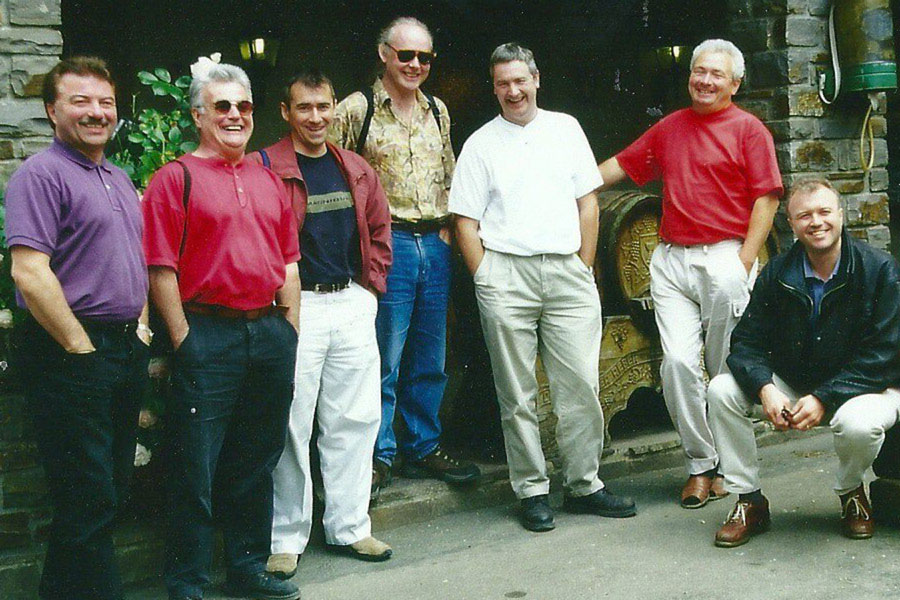
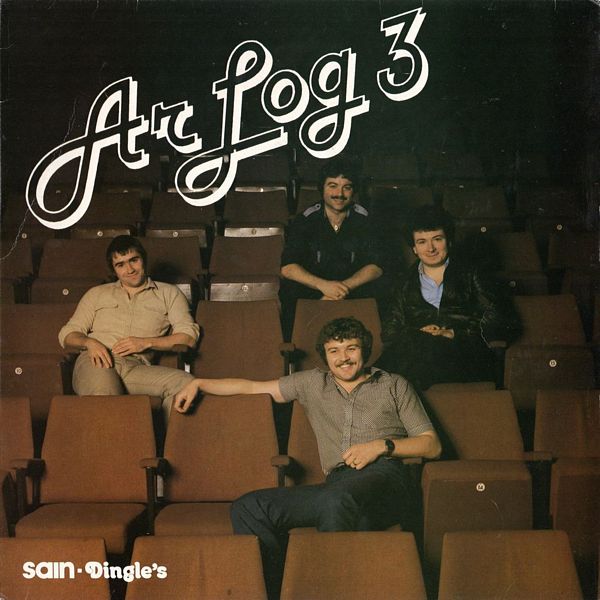 |
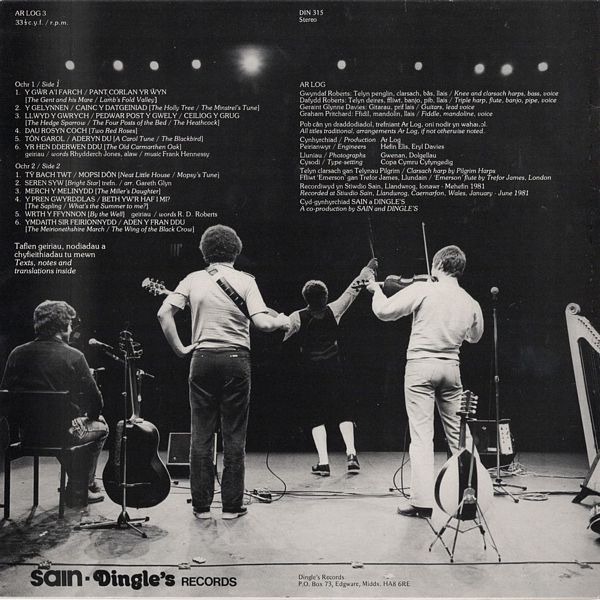
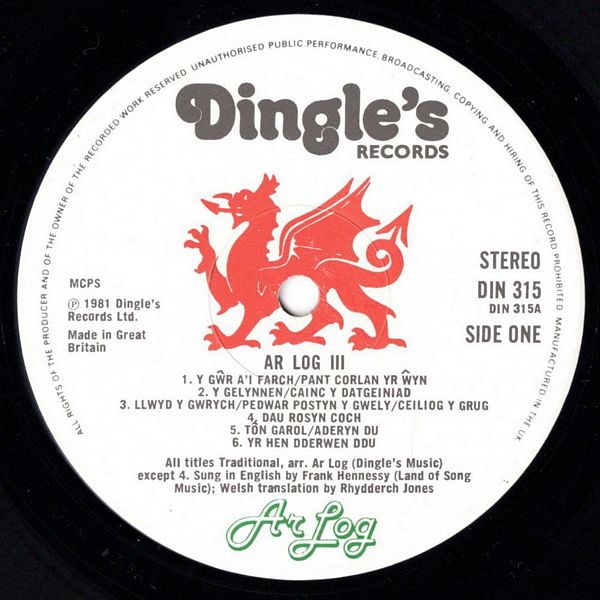
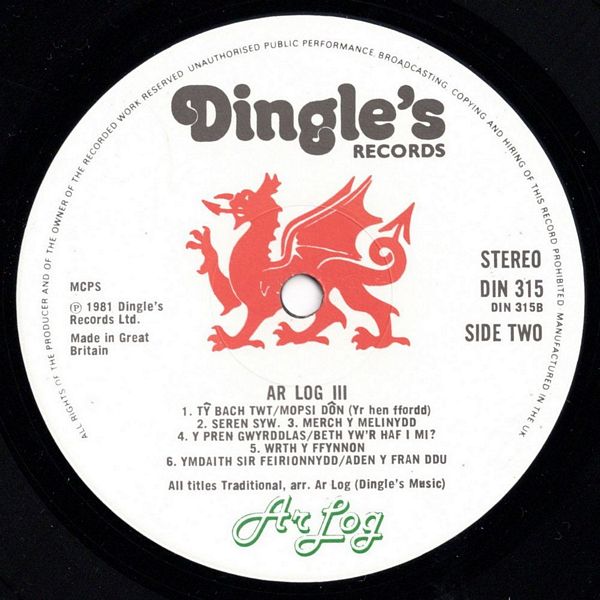
|
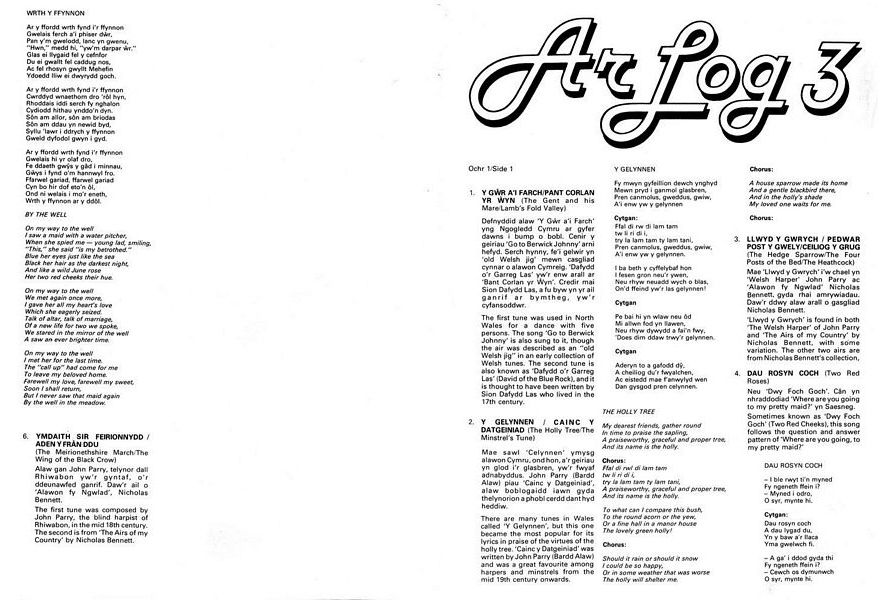
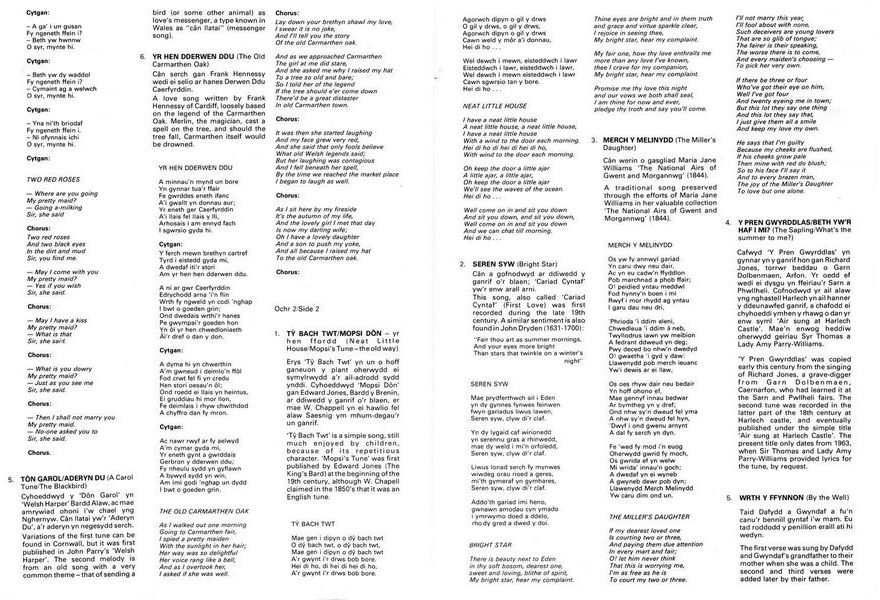
|
Sleeve Notes
Y GWR A'I FARCH/PANT CORLAN YR WYN (The Gent and his Mare/Lamb's Fold Valley)
The first tune was used in North Wales for a dance with five persons. The song 'Go to Berwick Johnny' is also sung to it, though the air was described as an "old Welsh jig" in an early collection of Welsh tunes. The second tune is also known as 'Dafydd o'r Garreg Las' (David of the Blue Rock), and it is thought to have been written by Sion Dafydd Las who lived in the 17th century.
Y GELYNNEN/CAINC Y DATGEINIAD (The Holly Tree/The Minstrel's Tune)
There are many tunes in Wales called 'Y Gelynnen', but this one became the most popular for its lyrics in praise of the virtues of the holly tree. 'Cainc y Datgeiniad' was written by John Parry (Bardd Alaw) and was a great favourite among harpers and minstrels from the mid 19th century onwards.
LLWYD Y GWRYCH/PEDWAR POST Y GWELY/CEILIOG Y GRUG (The Hedge Sparrow/The Four Posts of the Bed/The Heathcock)
'Llwyd y Gwrych' is found in both The 'Welsh Harper' of John Parry and 'The Airs of my Country' by Nicholas Bennett, with some variation. The other two airs are from Nicholas Bennett's collection,
DAU ROSYN COCH (Two Red Roses)
Sometimes known as 'Dwy Foch Goch' (Two Red Cheeks), this song follows the question and answer pattern of 'Where are you going, to my pretty maid?'
TON GAROL/ADERYN DU (A Carol Tune/The Blackbird)
Variations of the first tune can be found in Cornwall, but it was first published in John Parry's 'Welsh Harper'. The second melody is from an old song with a very common theme — that of sending a bird (or some other animal) as love's messenger, a type known in Wales as "cân Ilatai" (messenger song).
YR HEN DDERWEN DDU (The Old Carmarthen Oak)
A love song written by Frank Hennessy of Cardiff, loosely based on the legend of the Carmarthen Oak. Merlin, the magician, cast a spell on the tree, and should the tree fall, Carmarthen itself would be drowned.
TY BACH TWT/MOPSI DÔN — yr hen ffordd (Neat Little House/Mopsi's Tune-the old way)
Ty Bach Twt' is a simple song, still much enjoyed by children, because of its repetitious character. 'Mopsi's Tune' was first published by Edward Jones (The King's Bard) at the beginning of the 19th century, although W. Chapell claimed in the 1850's that it was an English tune.
SEREN SYW (Bright Star)
This song, also called 'Cariad Cyntaf (First Love) was first recorded during the late 19th century. A similar sentiment is also found in John Dryden (1631-1700):
"Fair thou art as summer mornings,
And your eyes more bright
Than stars that twinkle on a winter's
night"
MERCH Y MELINYDD (The Miller's Daughter)
A traditional song preserved through the efforts of Maria Jane Williams in her valuable collection 'The National Airs of Gwent and Morgannwg' (1844).
Y PREN GWYRDDLAS/BETH YW'R HAF I MI? (The Sapling/What's the summer to me?)
'Y Pren Gwyrddlas' was copied early this century from the singing of Richard Jones, a grave-digger from Garn Dolbenmaen, Caernarfon, who had learned it at the Sarn and Pwllheli fairs. The second tune was recorded in the latter part of the 18th century at Harlech castle, and eventually published under the simple title 'Air sung at Harlech Castle'. The present title only dates from 1963, when Sir Thomas and Lady Amy Parry-Williams provided lyrics for the tune, by request.
WRTH Y FFYNNON (By the Well)
The first verse was sung by Dafydd and Gwyndaf's grandfather to their mother when she was a child. The second and third verses were added later by their father.
YMDAITH SIR FEIRIONNYDD/ADENYFRANDDU (The Merionethshire March/The Wing of the Black Crow)
The first tune was composed by John Parry, the blind harpist of Rhiwabon, in the mid 18th century. The second is from 'The Airs of my Country' by Nicholas Bennett.